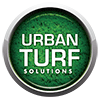Colour and Texture Variations
Artificial grass has come a long way from the uniform, monochrome turf of its early days. Today, it is available in a wide range of colour and texture variations, allowing homeowners and landscapers to select an option that closely matches their aesthetic preferences and usage requirements. Understanding these variations can help you make the most appropriate choice for your particular project.
Colour Variations
When it comes to artificial grass, green is not the only colour option available. While the classic lush green is still the most popular choice, there are various shades and tones to choose from, each capable of creating a different visual impact. These include lighter greens like lime and darker tones like forest green. Some products even combine multiple shades of green to create a more realistic and natural look.
In addition to green, artificial grass can also be found in shades of brown and tan. These colours are often used for the thatch – the layer of shorter blades at the base of the grass, intended to mimic the look of dead grass found in natural lawns.
Finally, there are also more vibrant colour options available, such as blue, red, white, and yellow. These are typically used in playful settings like children’s play areas or in marking out specific areas on sports fields.
Texture Variations
Texture in artificial grass refers to the feel and look of the grass blades. It is determined by the material and the manufacturing process. There are two primary types of artificial grass textures: straight and curled.
Straight artificial grass blades give a smooth, uniform look and are commonly used in landscaping and residential lawns. They are designed to mimic the look of fresh, upright natural grass.
Curled blades, on the other hand, add a touch of realism to the artificial grass by mimicking the look of natural grass that has bent or curled over time. This texture is often used in sports turfs and in thatch layers.
Furthermore, advancements in manufacturing technologies have led to the development of grass blades with varying shapes and widths. For instance, some high-end artificial grass products now feature ‘spine’ or ‘ridged’ blades that have a reinforced centre, much like the vein of a leaf. This helps the blades to stand upright for a longer period, providing a lush and full appearance despite heavy foot traffic.
Making The Right Choice
Choosing the right colour and texture of artificial grass depends on several factors. The primary consideration should be the intended use of the turf. For example, for a residential lawn, a natural green shade with straight blades might be the best choice, while a sports field might benefit from a more vibrant colour scheme and a blend of straight and curled textures.
Another critical factor to consider is the local climate. In areas with intense sunlight, choosing a lighter shade of green can help reduce heat absorption, keeping the surface cooler. In terms of texture, regions with heavy foot traffic might benefit from ridged blades, which can withstand the pressure better.
Personal aesthetic preferences also play a key role. Some individuals prefer the vibrant green look of fresh spring grass, while others might opt for a more mature, darker green look. Similarly, some might prefer the uniform look of straight blades, while others might opt for the realism provided by curled blades.
In conclusion, the colour and texture variations in artificial grass offer you the flexibility to customise the look and feel of your turf. By understanding these options, you can select a product that not only meets your functional requirements but also aligns with your aesthetic preferences.
